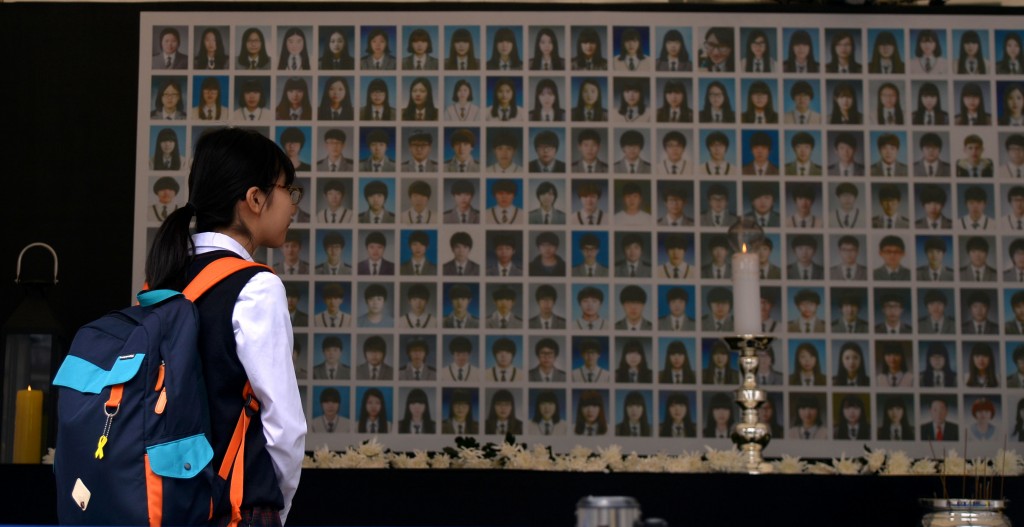- California Assembly OKs highest minimum wage in nation
- S. Korea unveils first graphic cigarette warnings
- US joins with South Korea, Japan in bid to deter North Korea
- LPGA golfer Chun In-gee finally back in action
- S. Korea won’t be top seed in final World Cup qualification round
- US men’s soccer misses 2nd straight Olympics
- US back on track in qualifying with 4-0 win over Guatemala
- High-intensity workout injuries spawn cottage industry
- CDC expands range of Zika mosquitoes into parts of Northeast
- Who knew? ‘The Walking Dead’ is helping families connect
A year later, Sewol tragedy continues to haunt South Korea

A student observes a one-year anniversary memorial for Danwon High School students killed in the Sewol tragedy. (Newsis)
The ferry disaster that paralyzed South Korea met its one-year anniversary Thursday.
On April 16, 2014, the passenger ferry boat Sewol sank near Jindo Island. It was carrying 476 people, a majority of them the junior class of Danwon High School on their way to a Jeju Island field trip.
Three hundred and four never made it out of the water. Of them, nine remain missing.
Later, investigators determined the cause of the sinking to lie with the overloading of the ship’s cargo paired with an inexperienced crew.
The tragedy sparked nationwide fury in South Korea, putting political leaders, the system and the ferry crew under fire.
Chung Hong-won, prime minister of South Korea, resigned at the end of April amid public outrage against the government’s handling of rescue efforts.
Public disapproval led to the disbandment of the Coast Guard by South Korean President Park Geun-hye on May 19.
Ferry captain Lee Joon-seok and more than a dozen crew members were tried and convicted of gross negligence and dereliction of duty by fleeing the boat before seeing passengers to safety; Lee received 36 years in prison in November last year in a heavily scrutinized case.
Yoo Byung-eun, the ferry’s owner who went into hiding after the sinking, was found dead in a field in July. Prosecutors had been looking to charge him with homicide by negligence; the effort to find him included a 4,000-strong police raid inside an Anseong Baptist Church, where he was a religious leader.
Meanwhile, the sinking was a wake-up call to South Koreans on the reality of lenient safety measures and practices for the sake of benefits to regulators and businesses.
By November, a pressured South Korean government had created a new ministry to oversee public safety and passed a special bill surrounding the Sewol to begin an 18-month-long inquiry by a panel into the disaster and the people involved, pushed further by demands from victims’ families.
Families have called for the recovery of Sewol from the water. Park responded earlier this month and said the ship would be salvaged if technically possible, at an expected cost of about $110 million.
Today, the country finds itself awash in yellow ribbons once more, a symbol of solidarity and hope post-tragedy.
Victims’ families visited the site of the sinking near Jindo Island via boat to conduct a memorial ceremony, according to local media.
Messages across hundreds more ceremonies and services scattered South Korea today are the same: “Let’s not forget April 16.”
















